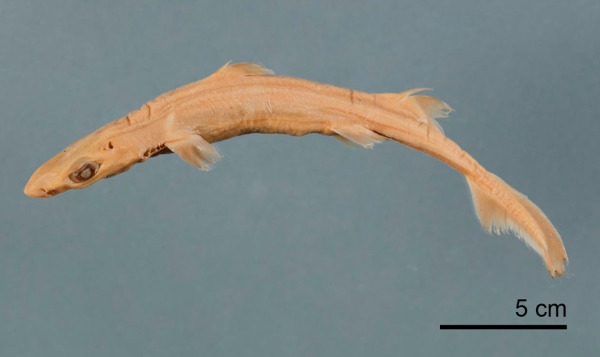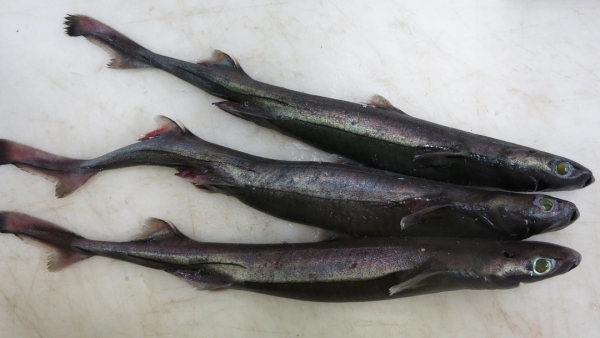A deep dive into the collection of an Auckland War Memorial Museum has revealed an extremely rare albino shark.
A recent research paper published in the Journal of Fish Biology by Dr. Brittany Finucci, a fisheries scientist at NIWA, describes the find as an albino Lucifer’s dogfish (Etmopterus lucifer).
Dr. Finucci visited the museum in 2018 to help identify and organise specimens in the deepwater shark collection. As she worked through the hundreds of specimens, she spotted the strange-looking shark.
“I hadn't seen an albino shark before, it was quite unique. Sharks are normally dark in colour, so it stood out. After looking over the animal, there was no indication that the animal had any pigment,” Dr. Finucci says.
Albinism is a condition that occurs when an animal produces little or no melanin pigment – the pigment responsible for producing colour – and causes white hair, skin, scales and occasionally red eyes.
While albinism has been well documented in humans and a wide range of animals, there have only been a handful of deepsea sharks recorded as albino.
“After looking through some literature, I couldn't find anything that reported albinism in the lanternshark family, Etmopteridae, so it was a new record. We can't say for certain how many sharks are albino because the deepsea is so understudied, but it is a rare occurrence,” says Dr. Finucci.
Lucifer’s dogfish is one of the smallest shark species in New Zealand, growing to just 50cm. They are found throughout the western Pacific Ocean living at depths up to 1000m.
Because the species of shark lives in near or total darkness, Dr. Finucci says it’s unlikely that the shark’s albino condition had a considerable effect on its life.
“There's no indication that being albino was detrimental to its health. The animal was a maturing female and a decent size.”
Lucifer’s dogfish, like most sharks in the lanternshark family are bioluminescent, meaning they can produce their own light. The albino shark examined by Dr. Finucci still had photophore organs suggesting that it could produce its own light.
She says there are several theories that explain why bioluminescent sharks produce light.
“Each shark species has its own unique pattern of bioluminescence, so it’s thought that bioluminescence is used for intra-species communication, so communicating among its own species. There's been speculations too, that it might be used for counter illumination or hiding from predators, and attracting prey,” she explains.
Remarkably, the albino shark was caught in 1984 by a research vessel at Cape Palliser in the Wairarapa. It was sent to the Auckland War Memorial Museum where it has remained unstudied for 36 years.
Dr. Finucci thinks that a general lack of research in deepwater sharks, as well as the considerable amount of time and resources required to process museum collections are possible reasons why the shark has never been studied. She says that the finding highlights the importance of museum collections and their ongoing role in science.
“There's certainly a lot to learn from museum collections and we need to make sure we continue to support museum efforts and work collaboratively so we can continue to better understand New Zealand’s biodiversity.”



